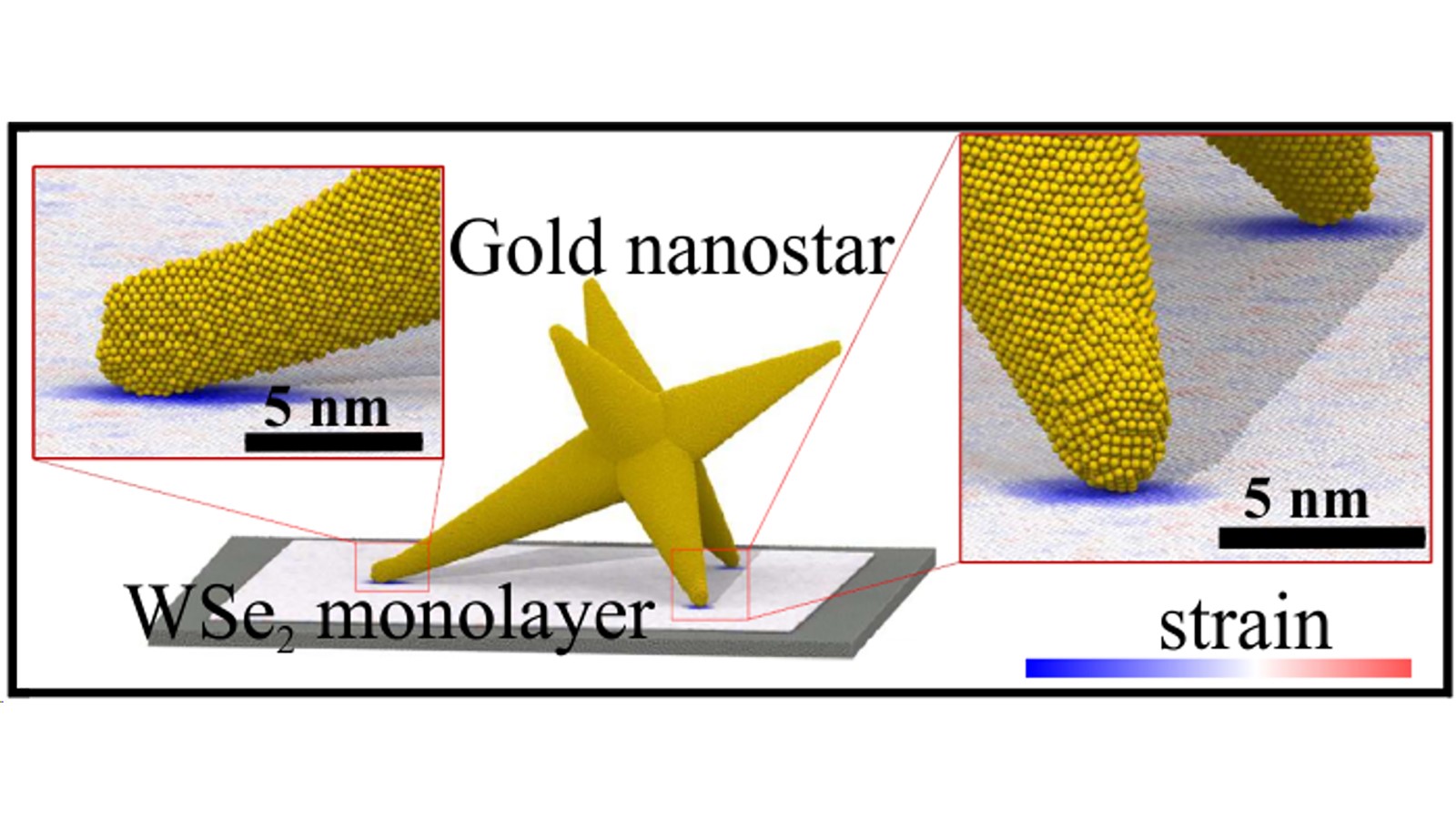A reliable on-demand source of single photons is key to next-generation quantum information technology. However, quantum emitters capable of producing single photons have many issues yet to be resolved. Monolayers of a transition metal dichalcogenide (TMD) have recently shown promise as a quantum emitter but need more study.
In a collaborative project with Northwestern University, Argonne scientists used nanometer-sized gold tips to create bright single-photon emitters in tungsten diselenide monolayers [1]. Use of laser pulses allowed generation of single photons on demand, where the statistical probability of creating more than one photon was negligible. The team also
- identified the origins of the quantum emitters to be related to the highly localized strain fields created by the gold tip ends and
- determined the single-photon emission qualities of the monolayers using single-particle spectroscopy.
Their findings are relevant for the development and understanding of single-photon emitters in TMD. This work could enable the creation of bright, large-scale single-photon sources for quantum communication applications. In related collaborative projects, Argonne scientists are pursuing ways to encode polarization or spin information in photon sources [2-4].
This work was performed in part at Argonne’s Center for Nanoscale Materials.
[1] Lintao Peng, Henry Chan, Priscilla Choo, Teri W. Odom, Subramanian K. R. S. Sankaranarayanan, and Xuedan Ma, Creation of single-photon emitters in WSe2 monolayers using nanometer-sized gold tips, Nano Letters, 20(8), 5866-5872 (2020),
[2] Lintao Peng, Wooje Cho, Xufeng Zhang, Dmitri Talapin, and Xuedan Ma, Observation of biexciton emission from single semiconductor nanoplatelets, Phys. Rev. Materials 5, L051601 (2021), DOI: 10.1103/PhysRevMaterials.5.L051601.
[3] Lintao Peng, Matthew Otten, Abhijit Hazarika, Igor Coropceanu, Moritz Cygorek, Gary P. Wiederrecht, Pawel Hawrylak, Dmitri V. Talapin, and Xuedan Ma, Bright trion emission from semiconductor nanoplatelets, Phys. Rev. Materials 4, 056006 (2020), DOI: 10.1103/PhysRevMaterials.4.056006.
[4] Nicolai F. Hartmann, Matthew Otten, Igor Fedin, Dmitri Talapin, Moritz Cygorek, Pawel Hawrylak, Marek Korkusinski, Stephen Gray, Achim Hartschuh, and Xuedan Ma, Uniaxial transition dipole moments in semiconductor quantum rings caused by broken rotational symmetry, Nature Commun. 10, 3253 (2019), DOI: 10.1038/s41467-019-11225-6.
